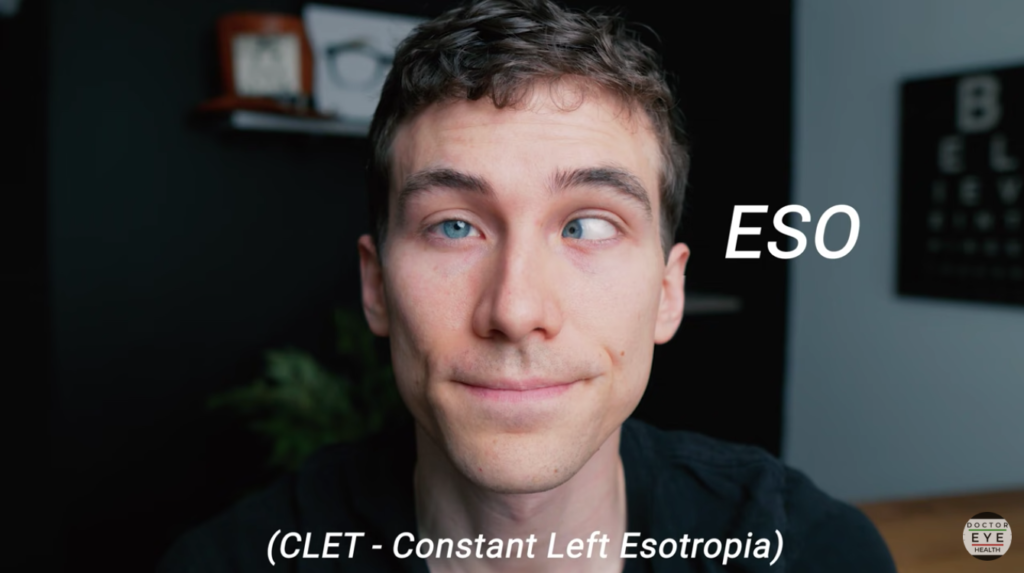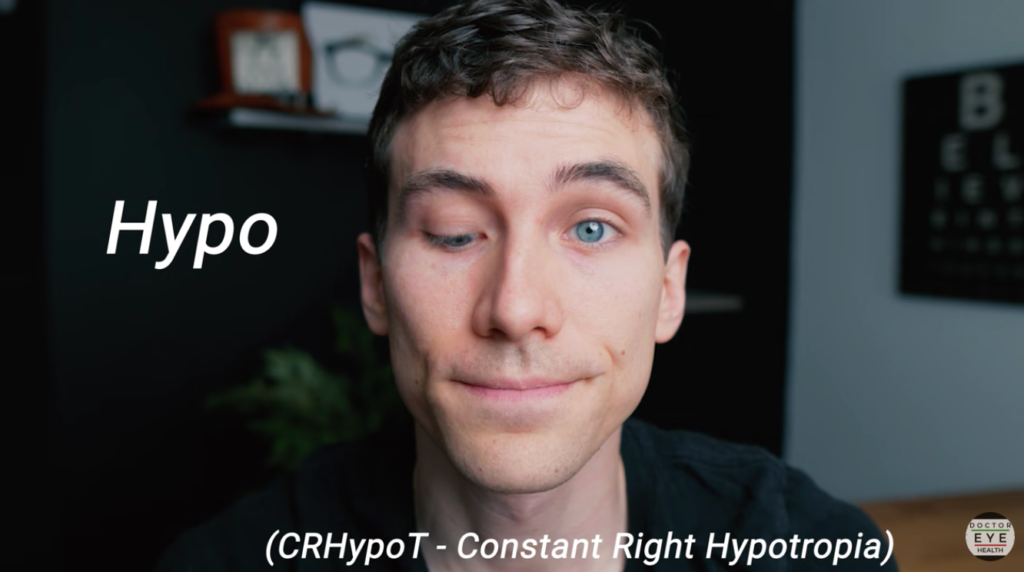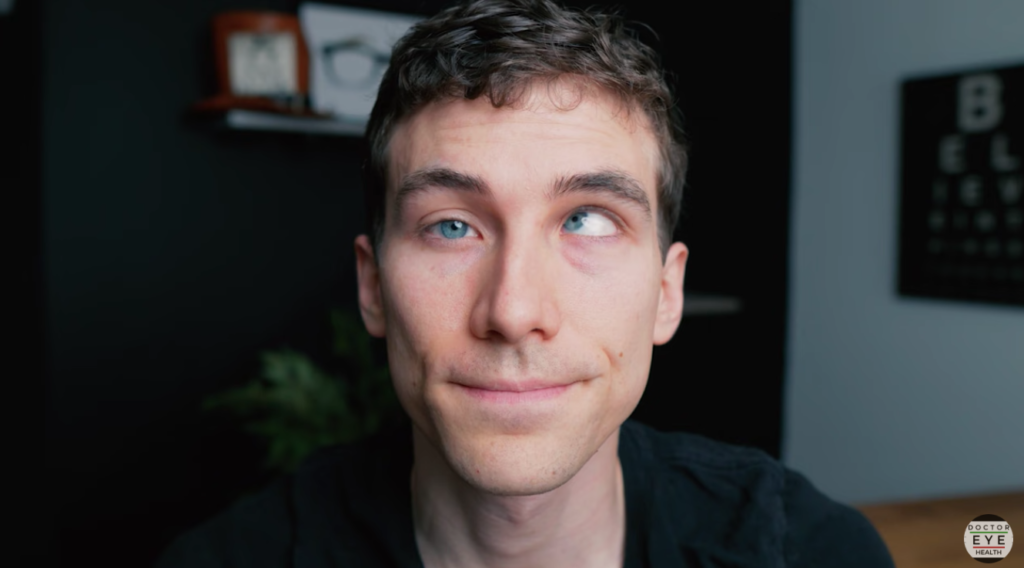What is Strabismus? Let’s go over this highly requested topic.
Important: Strabismus can lead to a lot of vision issues later in life. This is why catching strabismus early on is critical. It’s why I advocate for early comprehensive eye exams for children!
People sometimes confuse Strabismus with the term “Lazy eye” which is very much related to amblyopia. For more information on Amblyopia, check out my this playlist.
What is Strabismus?
What is Strabismus? Strabismus has multiple types. Let’s go over those:
Esotropia: If one eye is looking straight ahead with the other eye looking inward, we label this ESO.

Exotropia: When there is one eye kicking outward, we label this EXO.

Hypertropia: When one eye is looking upward, we label this HYPER.

Hypotropia: When one eye is looking downward, it is labeled HYPO.

It’s also possible to have a combination of the above.

We like to determine how much of a deviation it is, so we will use prisms to determine this. Then, we’ll label if it’s the left or right eye, or if it’s alternating, going from one side to the other.
Strabismus can be constant (all the time) or intermittent (some of the time).
We can also measure how severe it is in different directions of gaze.
What Causes Strabismus?
Many cases of strabismus are congenital or infantile. Babies will often have some minor deviations in their eye muscle movements in the first 6 months of life. The good news is that those deviations often self-correct by 6 months of age.
Babies may also have pseudo esotropia where is looks like the eyes are crossed and not looking straight ahead. In this case, they actually are looking straight ahead. However because of their wider/flatter nose bridge, it only appears to be esotropia.
Around the age of 2 or 3 years old, children really develop the ability to focus on near objects. And this is where strabismus can become really complex. It’s why catching it early is so important.
Other causes, especially in adults, include head trauma, severe diabetes, or a brain tumor or aneurysm.
How do we Treat Strabismus?
If caught early, we can prevent further maldevelopment of the visual processing centers because of strabismus. This is why I advocate for early, comprehensive exams for children.
Often, doctors will prescribe children some sort of occlusive therapy using an eye patch or an atropine eye drop to the better seeing eye. This penalizes the better seeing eye and forces the other eye to adjust.
Adults may get glasses outfitted with a prism to help get rid of double vision.
Finally, for severe strabismus, surgery may be an option. In children, the brain has the ability to relearn how to use the eyes after this surgery, correcting their strabismus. Surgery is often more cosmetic for adults if amblyopia is already rooted in.
Disclaimer: This information is not meant for medical diagnosis or treatment. You should follow up with your local healthcare provider regarding all matters related to your health.
